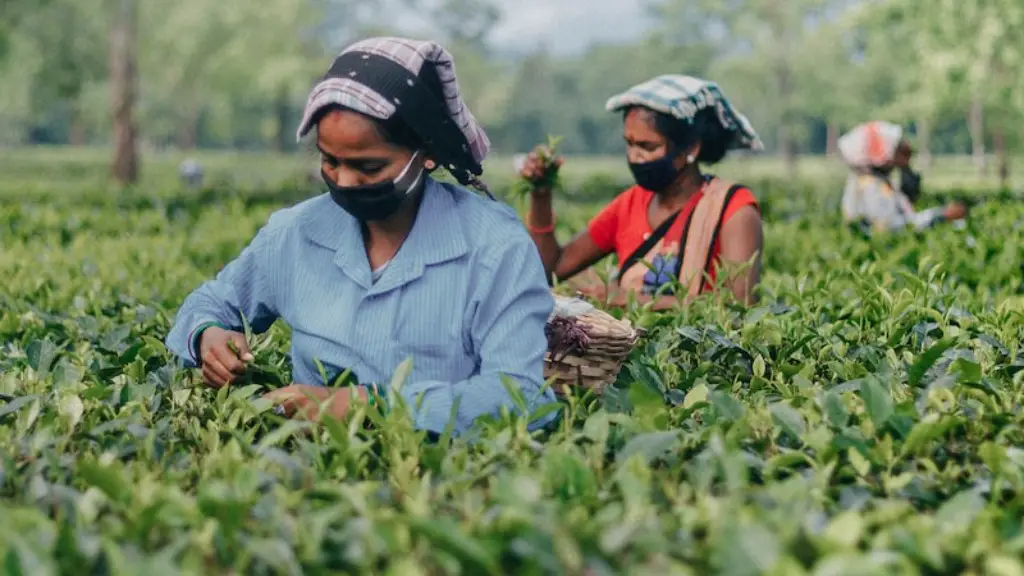Slash and burn agriculture is an ancient and traditional method of clearing land for farming, typically involving cutting and burning of standing vegetation in order to create arable or pastoral land. It has been used by generations all over the world. There’s no doubt that slash and burn has had a major impact on interregional activities, leading to shifts in resource use and economic activities between areas.
Impact on trades
Slash and burn has led to the displacement of goods across the landscape. As people have had to move from place to place due to the destruction of farmland, trading patterns have changed, with goods and services being traded across regions in order to meet people’s needs. This has also led to an increase in cross-cultural interactions. There has been an influx of goods that weren’t available before, such as iron, as well as new trading partnerships that have enabled communities to benefit from the exchange of goods and services.
Impact on technology
The displacement of goods has had an impact on technology, as it has enabled the spread of ideas across regions. This has enabled people to invent new technologies in order to adapt to the changing landscape and make the most of the limited resources they’re presented with. It has also allowed people to capitalize on opportunities not available to them before, such as the development of a trade network.
Impact on infrastructure
Slash and burn has had an impact on the infrastructure of areas affected. It has decreased the availability of natural resources such as firewood and water, which in turn has caused people to become more reliant on imports for these items. This reliance has also caused the locals to be more dependent on foreign aid, as the resources necessary for economic development cannot be obtained locally. This can also lead to a weakening of local economies.
Impact on environment
The short-term impact of slash and burn has been the destruction of forests, resulting in a number of environmental issues. This includes a decrease in the biodiversity of the area, soil erosion, and floods. Longer-term effects include the release of carbon dioxide and other greenhouse gases which contribute to climate change. These effects can cause crop failure, leading to a decrease in food security, as well as an increase in the spread of disease.
Impact on settlement patterns
The displacement of people due to slash and burn has also had an impact on settlement patterns. People have had to move from place to place in order to find new farmland, leading to a concentration of population in certain areas. This can also lead to a decrease in the variety of lifestyles and skills present within the area, resulting in a decrease in the creative problem-solving abilities of the people. People are also more likely to settle in areas with good access to resources and technology.
Impact on health
The decreased availability of natural resources has had a direct impact on the health of people living in areas affected by slash and burn. People have fewer resources they can draw on to ensure their health, such as clean water and appropriate foods. This also contributes to an increase in the spread of disease. The displacement of people has also led to a decrease in access to healthcare as resources have been spread thin, leading to a decrease in the overall health of the people.
Impact on economy
The impact of slash and burn on the economy is clear, with people’s reliance on foreign aid and imports leading to a decrease in their economic security. Resources are more scarce, leading to an increase in prices, which can have a further impact on the already weakened local economy. As people are forced to move, trade networks can also be weakened, leading to a decrease in the availability of certain goods and services.
Impact on education
The increased displacement and restructuring of populations has had an impact on the ability of people to access education. As people are forced to migrate away from their former homes, they may be stuck in areas with limited access to education. This creates a cycle of poverty, as people are unable to further their education and obtain the skills needed to improve their economic situation.
Impact on cultural integration
Slash and burn has had an impact on the cultural integration between different population groups. As people are displaced and spread out, cultural norms and beliefs can become fragmented, leading to a decrease in the amount of cultural integration that is present in affected areas. This can have a negative effect on the stability of communities and how they interact with each other.


